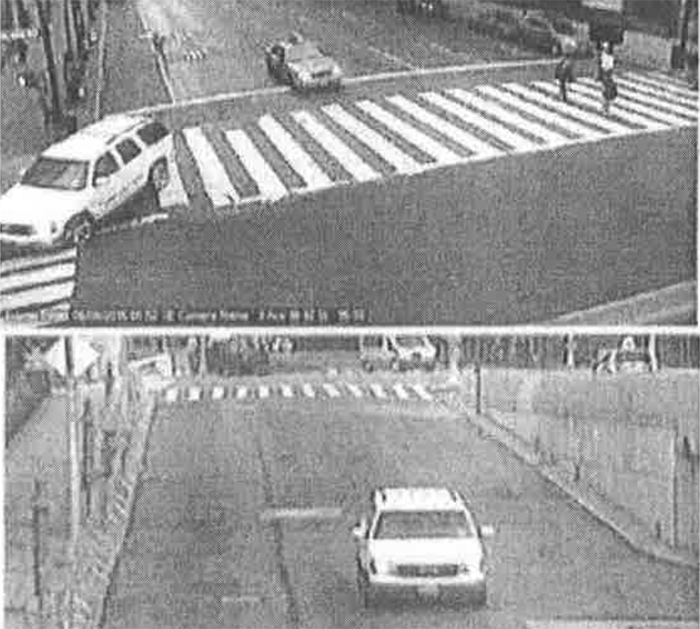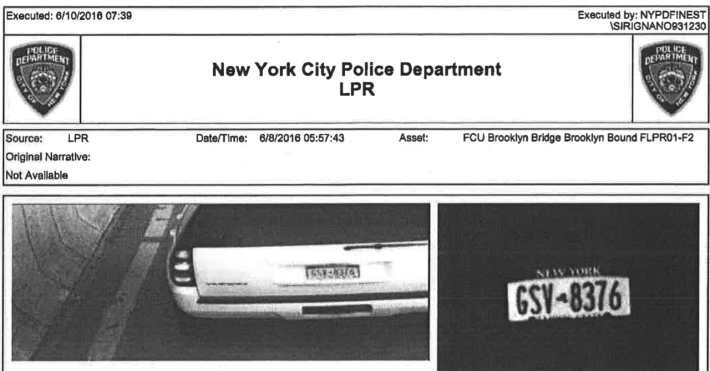How Hit-and-Run Drivers Get Off Scot-Free: They Tell NYPD “It Wasn’t Me”
7:45 AM EDT on August 22, 2018

If you're ever struck by a hit-and-run driver in New York, you can't count on NYPD to apprehend the perp, even if cops identify the car involved. All the driver has to do is tell police someone else must have been behind the wheel.
After experiencing the life-altering trauma of a hit-and-run collision, Bernadette Karna expected police to charge the motorist who struck her. Investigators made progress and tracked down the vehicle. But then the NYPD legal bureau stepped in and said that identifying the owner of the vehicle did not suffice to file charges. The car owner claimed he didn't do it, and his word was enough for NYPD.
Karna's ordeal started early in the morning of June 8, 2016, when a northbound driver struck her as she crossed Third Avenue with the walk signal at 41st Street. The driver dragged her 50 feet and sped away without stopping to check on the person he'd hit.
Lying in the ambulance, Karna expected to die. She couldn't breathe because her ribs were crushed, and she'd sustained fractures to her back, shoulder, knee, and foot. After major surgeries and ten excruciating days in the intensive care unit, Karna, 50 years old at the time of the collision, spent two years in physical therapy, missing 20 months of work and losing $80,000 in foregone wages.
Karna knew police were looking into the crash, but they didn't give her the results of the investigation, she told the City Council at a hearing last week [PDF]. While she was still recovering from her injuries, she had to file a freedom of information request with NYPD to obtain the crash report. Finally, 20 months after she sent the request, police furnished documentation of their investigation into the crash that nearly ended Karna's life. Reading it traumatized her all over again.
Using a sophisticated network of cameras known as the Lower Manhattan Security Initiative, or LMSI, police had positively identified the perpetrator's license plate and vehicle, tracking its movements from the crash site to 42nd Street, over to the FDR Drive and south to the Brooklyn Bridge. The white GMC SUV belonged to a man named Joseph Alrick, 49, who lived in Upper Manhattan.
On the afternoon of June 26, 2016, two NYPD detectives from the 17th Precinct knocked on Alrick's door. He didn't answer, but later that day he called the lead detective, Christopher Kolenda.

Alrick confirmed to Kolenda that he owned the SUV, that he was driving it the day of the crash, and that no one else drives the car, according to Kolenda's crash report. But he denied that he was involved in the crash or even driving on the streets where his license plate was photographed, contradicting the camera evidence. He told Kolenda "that he was a pastor and that he would never lie."
Alrick said he would come speak to police in person, but soon after hanging up, Kolenda received a call from Alrick's attorney saying he would make no further statements without her present.
Two months later, on August 31, Kolenda contacted NYPD's legal bureau "to ascertain if there was any probable cause to arrest the suspect Joseph Alrick." By this point, he had already done more work than NYPD's typical hit-and-run crash investigations entail, and appeared to be seeking the go-ahead to make an arrest. He didn't get it.
Elizabeth Moehle, an NYPD lawyer and former assistant DA with the Brooklyn District Attorney's office, advised Kolenda that without either a positive ID of the driver by an eyewitness or a confession from Alrick himself that he was behind the wheel, police lacked legal grounds to arrest him. Charges were never filed.
Karna's attorney, Steve Vaccaro (whose law firm is a sponsor of Streetsblog NYC), said that Kolenda could have pursued the case further -- the crash report indicates that he never inspected Alrick's car for damage consistent with the collision -- but that identifying the owner of the vehicle should nevertheless constitute probable cause for arrest.
Imagine a scenario where all the circumstances are identical except the weapon. "If someone had a gun and shot outside the window of his car, they would have arrested him," said Vaccaro. "What about this is different?"
In effect, NYPD policy is to give hit-and-run drivers in non-fatal crashes an easy out. The perpetrator can simply say "it wasn't me" and police will not file charges, even if they identify the vehicle. This high threshold of proof helps explain why police investigators put so little effort into apprehending hit-and-run drivers.
NYPD's public information office did not respond to a request to interview Elizabeth Moehle about the department's policy on filing hit-and-run charges, but the pattern is clear.
The owner of the vehicle involved in the hit-and-run crash that severely injured Dulcie Canton in August, 2014, was identified by Canton and Vaccaro, her attorney, but the detective assigned to the case at the 83rd Precinct declined to even interview him.
The 114th Precinct did not apprehend the van driver who, in March, 2013, struck John Kelly and continued driving as Kelly clung to the windshield. Although Kelly could identify the driver and the van's owner went so far as to name the driver, police did not investigate.
In an August 10 letter to NYPD Chief of Department Terence Monahan, Vaccaro's firm flagged five other instances, in addition to the Bernadette Karna case, where NYPD failed to file charges against drivers involved in non-fatal hit-and-runs whose vehicles were identified (read the case summaries on pages 7-10 of this PDF -- they're unreal).
Another thing these hit-and-run motorists tend to have in common, on top of the total impunity NYPD grants them, is a record of repeated dangerous driving.
Joseph Alrick, for instance, was involved in two other crashes less than a year prior to the hit-and-run that severely injured Bernadette Karna, according to DMV records.
Six months before she ran over and killed two children, Dorothy Bruns struck Brandy Williams near Queensbridge Houses and drove off, but police failed to follow up. Cameras had also caught Bruns running red lights or speeding in school zones eight times in the span of a few years.
To intervene where NYPD won't tread, Council Member Brad Lander proposed Intro 971, which would mandate a safe driving course for people who rack up multiple camera violations and enable the city to impound their vehicles after the fifth offense in 12 months. At a City Council hearing last week, DOT pushed back on Intro 971 and said implementation would have to involve Albany (a legal analysis that Vaccaro disputes -- more on that in a later post).
Bernadette Karna told her story to the City Council to support Intro 971, in the belief that it could have influenced the driver of that SUV and prevented the crash that traumatized her. But she may also have prompted the council to wring crash investigation reforms out of NYPD.
Listening to Karna address the council chambers, Speaker Corey Johnson became visibly agitated, read a portion of her testimony aloud, and demanded that NYPD Chief of Transportation Thomas Chan look into the department's hit-and-run investigation protocols and report back to him.
So far Chan has yet to respond. "The Council is following up on Speaker Johnson’s requests to the NYPD at the hearing and will continue to work with the NYPD until his questions are answered," a Council spokesperson said.
Stay in touch
Sign up for our free newsletter
More from Streetsblog New York City
Friday’s Headlines: Canal Street Follies Edition
Manhattan Borough President Mark Levine isn't happy. Plus other news.
Daylight Again: Bronx Community Board Backs Parking Ban at Intersections
The Boogie Down is down with daylighting!
Community Board Wants Protected Bike Lane on Empire Blvd.
Brooklyn Community Board 9 wants city to upgrade Empire Boulevard's frequently blocked bike lane, which serves as a gateway to Prospect Park.
The Brake: Why We Can’t End Violence on Transit With More Police
Are more cops the answer to violence against transit workers, or is it only driving societal tensions that make attacks more frequent?
Report: Road Violence Hits Record in First Quarter of 2024
Sixty people died in the first three months of the year, 50 percent more than the first quarter of 2018, which was the safest opening three months of any Vision Zero year.




